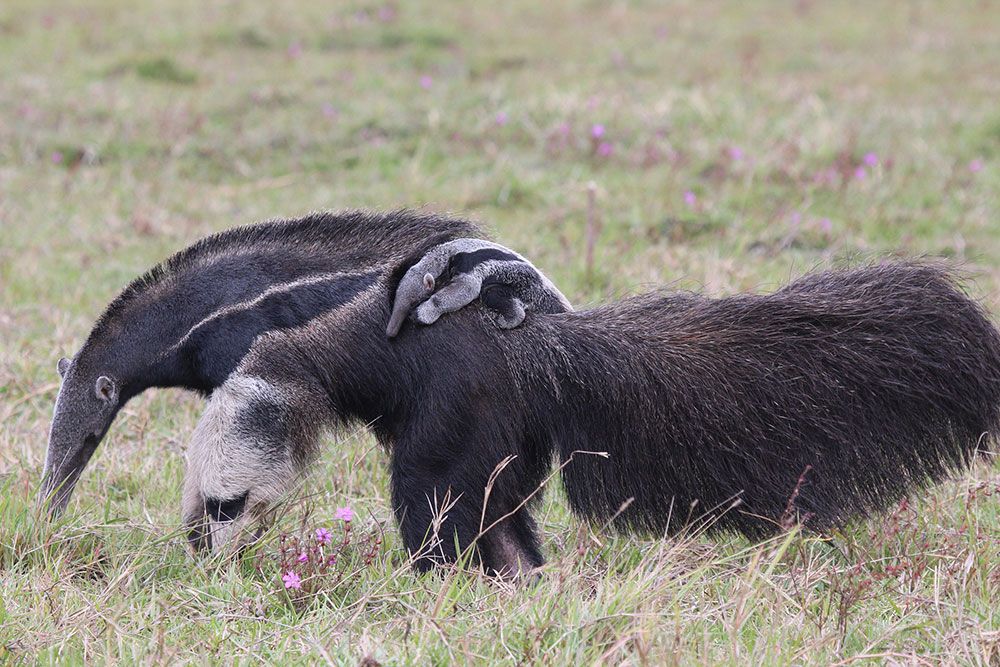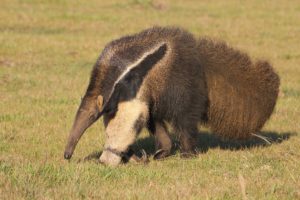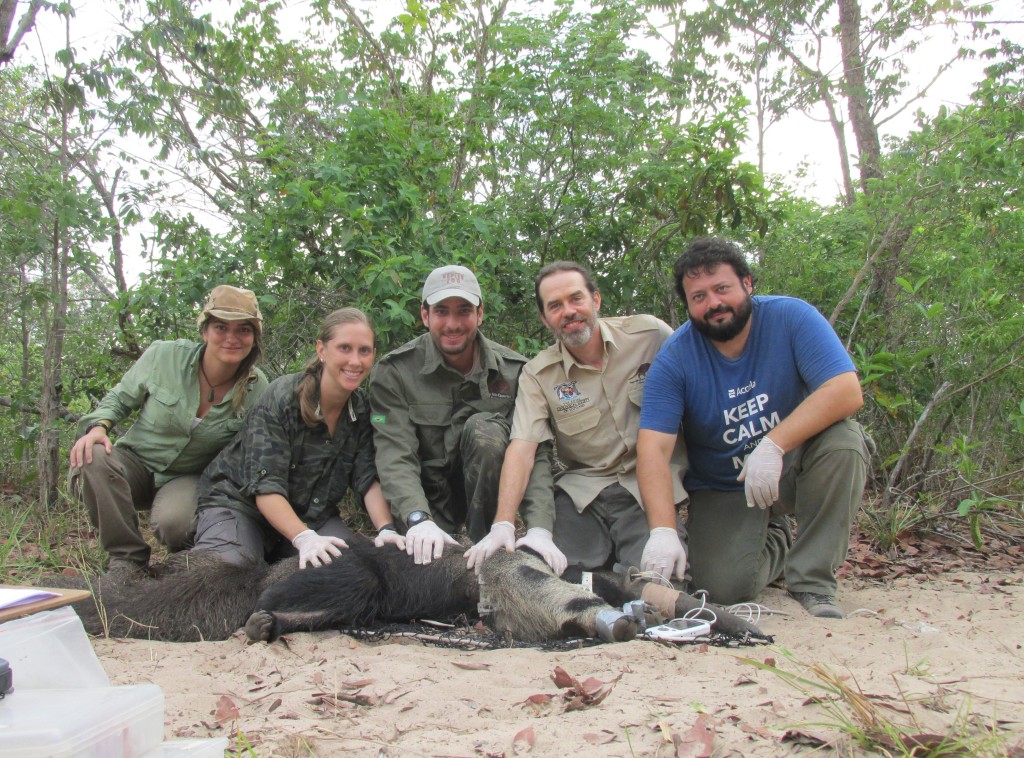Giant anteaters in Brazil

Status
Vulnerable
Population
30% decrease in last 10 years
Scientific name
Myrmecophaga tridactyla
Why, when and how do giant anteaters cross roads? Our research project is attempting to understand the impacts and effects of roads on giant anteater populations.
Funding for this project has now finished
The problem
The giant anteater, an iconic creature of South America, is unfortunately listed as vulnerable to extinction. The scrub forests and grasslands within the Cerrado biome of Brazil are under threat. In the last 35 years more than half of Brazil’s Cerrado has been converted into pasture or agricultural lands for cash crops. The remaining habitat is highly fragmented and bisected in several places by an extensive road network. Not only do the roads worsen the habitat fragmentation but they are a severe cause of mortality for local animals. In the Mato Grosso do Sul in particular, giant anteaters suffer some of the highest number of fatalities.
The solution
Despite this, there is still a lack of understanding on the effect of roads on population persistence – they could potentially be acting as population sinks and as barriers to movement and gene flow. This project directly addresses these threats, and aims to understand and quantify the impact of roads on giant anteater populations. It also aims to evaluate the effect of roads on giant anteater behaviour, population structure and health. Arnaud Desbiez and his team will take the results from the project and translate them into landscape and road management guidelines to mitigate the negative effects roads are having on wildlife.
Latest news
Thanks to your support:
- We have hired and supported the training of two new veterinarians on the project, with their salaries generously provided by Houston zoo and Nashville zoo.
- As of December, 3 animals are currently being monitored with the use of collars.
- Contact has been made with OCEARCH, a recognized world leader in tracking species such as great white sharks. Progress on the idea to collaborate and track giant anteaters, sharing real time data on the internet, has been made.

- Protocols for necropsies have been created and contact has been made with a number of landowners in order to find a new study area.
- We have assigned all tasks to start work, and should be ready to begin monitoring highways in March.
- After one year of hard work a new NGO called ICAS has been created which will manage all of the project administration.
Caught on camera!
Take a look at some of the giant anteater’s neighbours caught on camera trap candid camera
Thank you to all our donors who helped us fund this work. You can help us support more projects like this with a donation today:

